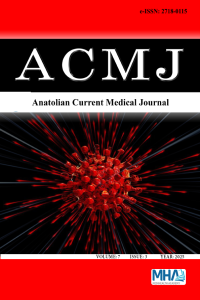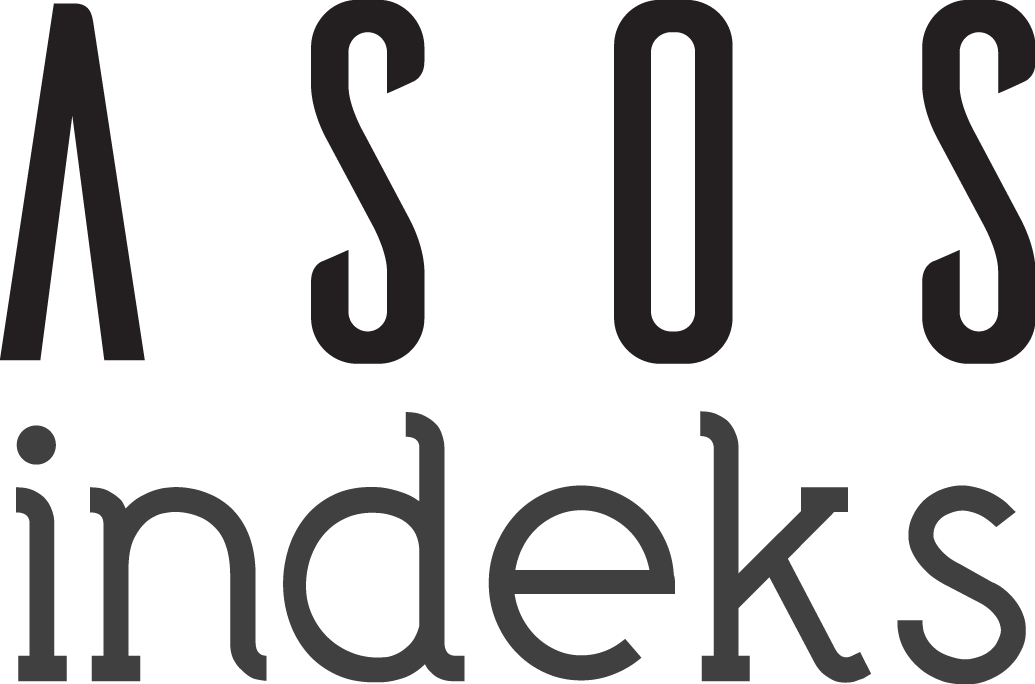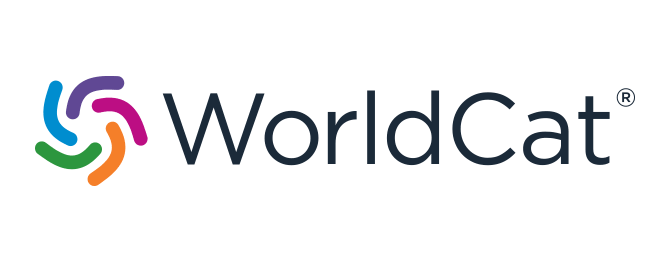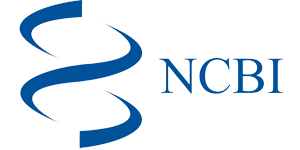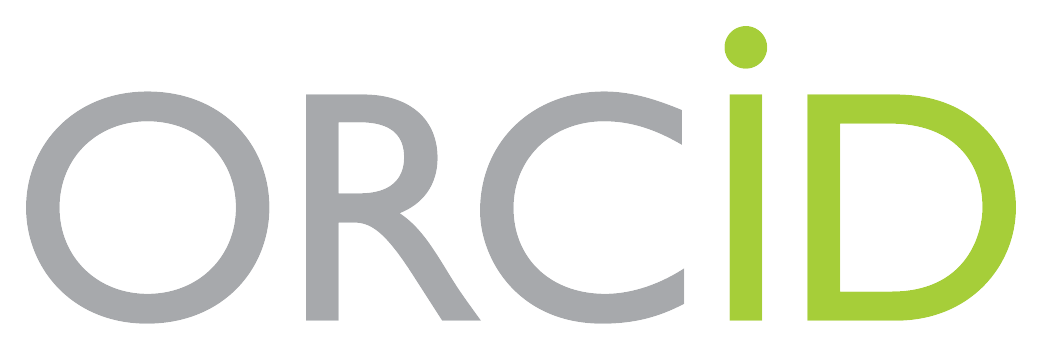Morphometric analysis of the spine in patients with single-level lumbar disc herniations: clinical study
Abstract
Aims: It was reported in the literature that sagittal balance may be impaired in patients with spinal deformities and lumbar degenerative diseases. In this study, we analyzed the relationship between disc herniation and the results of spinal column morphological measurements related to sagittal balance on lumbar direct radiographs and preoperative blood biochemistry results in patients with single-level lumbar disc herniation and healthy subjects.
Methods: Patients who underwent surgery for L4-L5 or L5-S1 intervertebral disc herniation and healthy individuals were included in the study. The participants were then grouped into the control group (n=15) and the LDH group (n=30). Patients were also grouped into the L4-5 HNP group (n=15) and the L5-S1 HNP group (n=15). Age, gender, blood count, and serum C-reactive protein values of all individuals and L1-S1 Cobb angles, T12 and S1 slope angles, L4-S1 Cobb angles, each disc height, and L1-L5 vertebral column height were measured on lumbar direct radiographs.
Results: Age (p=0.035), T12 slope angle (p=0.032), L4-S1 Cobb angle (t=3.649, p=0.001), L1-L2 intervertebral disc height (p=0.032), L5-S1 intervertebral disc height (p=0.033), and eosinophil counts (p=0.039) were different between the control group and LDH group. However, there was no statistical difference between patients with L4-L5 disc herniation and patients with L5S1 disc herniation in terms of study parameters. ROC-curve and regression analysis revealed that if age over 39 years if the T12 slope angle was less than 21.50 degrees if the L4-S1 Cobb angle was less than 32.43 degrees if L1-L2 disc height was above 7.45 mm and if L5-S1 disc height was below 8.15 mm (p=0.041) these parameters could be used predictive markers for the diagnosis of the lumbar disc herniation (p<0.05).
Conclusion: At the end of the study, it was argued that patient age, T12 slope angle, L4-S1 Cobb angle, L1-L2, and L5-S1 intervertebral disc heights measured on lumbar X-ray images could be used as predictive parameters for the diagnosis of lumbar disc herniation in these patients.
References
- Wang T, Ma L, Yang DL, et al. Radiological analysis for thoracolumbar disc herniation in spinopelvic sagittal alignment: a retrospective study. Medicine (Baltimore). 2017;96(14):e6593. doi:10.1097/MD. 0000000000006593
- Lamartina C, Berjano P, Petruzzi M, et al. Criteria to restore the sagittal balance in deformity and degenerative spondylolisthesis. Eur Spine J. 2012;21Suppl 1(Suppl 1): S27-S31. doi:10.1007/s00586-012-2236-9
- Liang C, Sun J, Cui X, Jiang Z, Zhang W, Li T. Spinal sagittal imbalance in patients with lumbar disc herniation: its spinopelvic characteristics, strength changes of the spinal musculature, and natural history after lumbar discectomy. BMC Musculoskelet Disord. 2016;17(1):1-8. doi:10. 1186/s12891-016-1164-y
- Baran E, Karademir M. Evaluation of sagittal balance and spinopelvic parameters in patients with lumbar disc herniation. Cumhuriyet Medical Journal. 2018;40(4):446-453. doi:10.7197/223.vi.502383
- Endo K, Suzuki H, Tanaka H, Kang Y, Yamamoto K. Sagittal spinal alignment in patients with lumbar disc herniation. Eur Spine J. 2010; 19(3):435-438. doi:10.1007/s00586-009-1240-1
- Rajnics P, Templier A, Skalli W, Lavaste F, Illes T. The importance of spinopelvic parameters in patients with lumbar disc lesions. Int Orthop. 2002;26(2):104-108. doi:10.1007/s00264-001-0317-1
- Wei X, Gengwu L, Chao C, et al. Correlations between the sagittal plane parameters of the spine and pelvis and lumbar disc degeneration. J Orthop Surg Res. 2018;13(1):137. doi:10.1186/s13018-018-0838-6
- Philippi M, Shin C, Quevedo S, et al. Roussouly classification of adult spinal deformity. Proc (Bayl Univ Med Cent). 2024;37(4):688-691. doi:10. 1080/08998280.2024.2334548
- Oh YM, Eun JP. Clinical impact of sagittal spinopelvic parameters on disc degeneration in young adults. Medicine (Baltimore). 2015;94(42):e1833. doi:10.1097/MD.0000000000001833
- Chun SW, Lim CY, Kim K, Hwang J, Chung SG. The relationships between low back pain and lumbar lordosis: a systematic review and meta-analysis. Spine J. 2017;17(8):1180-1191. doi:10.1016/j.spinee.2017. 04.034
- Menezes-Reis R, Garrido Salmon CE, Bonugli GP, et al. Association between spinal alignment and biochemical composition of lumbar intervertebral discs assessed by quantitative magnetic resonance imaging. Quant Imaging Med Surg. 2021;11(6):2428-2441. doi:10.21037/qims-20-40
- Roussouly P, Pinheiro-Franco JL. Biomechanical analysis of the spino-pelvic organization and adaptation in pathology. Eur Spine J. 2011;20 Suppl 5(Suppl 5):609-618. doi:10.1007/s00586-011-1928-x
- Nikoobakht M, Pourmahmoudian M, Gerszten PC, Pourmahmoudian M. Global sagittal angle and spinopelvic sagittal alignment: a step toward investigation of sagittal plane deformity in upper lumbar disc herniation. Br J Neurosurg. 2024;38(3):551-555. doi:10.1080/02688697.2021.1923651
Abstract
References
- Wang T, Ma L, Yang DL, et al. Radiological analysis for thoracolumbar disc herniation in spinopelvic sagittal alignment: a retrospective study. Medicine (Baltimore). 2017;96(14):e6593. doi:10.1097/MD. 0000000000006593
- Lamartina C, Berjano P, Petruzzi M, et al. Criteria to restore the sagittal balance in deformity and degenerative spondylolisthesis. Eur Spine J. 2012;21Suppl 1(Suppl 1): S27-S31. doi:10.1007/s00586-012-2236-9
- Liang C, Sun J, Cui X, Jiang Z, Zhang W, Li T. Spinal sagittal imbalance in patients with lumbar disc herniation: its spinopelvic characteristics, strength changes of the spinal musculature, and natural history after lumbar discectomy. BMC Musculoskelet Disord. 2016;17(1):1-8. doi:10. 1186/s12891-016-1164-y
- Baran E, Karademir M. Evaluation of sagittal balance and spinopelvic parameters in patients with lumbar disc herniation. Cumhuriyet Medical Journal. 2018;40(4):446-453. doi:10.7197/223.vi.502383
- Endo K, Suzuki H, Tanaka H, Kang Y, Yamamoto K. Sagittal spinal alignment in patients with lumbar disc herniation. Eur Spine J. 2010; 19(3):435-438. doi:10.1007/s00586-009-1240-1
- Rajnics P, Templier A, Skalli W, Lavaste F, Illes T. The importance of spinopelvic parameters in patients with lumbar disc lesions. Int Orthop. 2002;26(2):104-108. doi:10.1007/s00264-001-0317-1
- Wei X, Gengwu L, Chao C, et al. Correlations between the sagittal plane parameters of the spine and pelvis and lumbar disc degeneration. J Orthop Surg Res. 2018;13(1):137. doi:10.1186/s13018-018-0838-6
- Philippi M, Shin C, Quevedo S, et al. Roussouly classification of adult spinal deformity. Proc (Bayl Univ Med Cent). 2024;37(4):688-691. doi:10. 1080/08998280.2024.2334548
- Oh YM, Eun JP. Clinical impact of sagittal spinopelvic parameters on disc degeneration in young adults. Medicine (Baltimore). 2015;94(42):e1833. doi:10.1097/MD.0000000000001833
- Chun SW, Lim CY, Kim K, Hwang J, Chung SG. The relationships between low back pain and lumbar lordosis: a systematic review and meta-analysis. Spine J. 2017;17(8):1180-1191. doi:10.1016/j.spinee.2017. 04.034
- Menezes-Reis R, Garrido Salmon CE, Bonugli GP, et al. Association between spinal alignment and biochemical composition of lumbar intervertebral discs assessed by quantitative magnetic resonance imaging. Quant Imaging Med Surg. 2021;11(6):2428-2441. doi:10.21037/qims-20-40
- Roussouly P, Pinheiro-Franco JL. Biomechanical analysis of the spino-pelvic organization and adaptation in pathology. Eur Spine J. 2011;20 Suppl 5(Suppl 5):609-618. doi:10.1007/s00586-011-1928-x
- Nikoobakht M, Pourmahmoudian M, Gerszten PC, Pourmahmoudian M. Global sagittal angle and spinopelvic sagittal alignment: a step toward investigation of sagittal plane deformity in upper lumbar disc herniation. Br J Neurosurg. 2024;38(3):551-555. doi:10.1080/02688697.2021.1923651
Details
| Primary Language | English |
|---|---|
| Subjects | Brain and Nerve Surgery (Neurosurgery) |
| Journal Section | Research Articles |
| Authors | |
| Publication Date | May 30, 2025 |
| Submission Date | April 12, 2025 |
| Acceptance Date | April 23, 2025 |
| Published in Issue | Year 2025 Volume: 7 Issue: 3 |
TR DİZİN ULAKBİM and International Indexes (1b)
Interuniversity Board (UAK) Equivalency: Article published in Ulakbim TR Index journal [10 POINTS], and Article published in other (excuding 1a, b, c) international indexed journal (1d) [5 POINTS]
Note: Our journal is not WOS indexed and therefore is not classified as Q.
You can download Council of Higher Education (CoHG) [Yüksek Öğretim Kurumu (YÖK)] Criteria) decisions about predatory/questionable journals and the author's clarification text and journal charge policy from your browser. https://dergipark.org.tr/tr/journal/3449/file/4924/show
Journal Indexes and Platforms:
TR Dizin ULAKBİM, Google Scholar, Crossref, Worldcat (OCLC), DRJI, EuroPub, OpenAIRE, Turkiye Citation Index, Turk Medline, ROAD, ICI World of Journal's, Index Copernicus, ASOS Index, General Impact Factor, Scilit.The indexes of the journal's are;
The platforms of the journal's are;
|
The indexes/platforms of the journal are;
TR Dizin Ulakbim, Crossref (DOI), Google Scholar, EuroPub, Directory of Research Journal İndexing (DRJI), Worldcat (OCLC), OpenAIRE, ASOS Index, ROAD, Turkiye Citation Index, ICI World of Journal's, Index Copernicus, Turk Medline, General Impact Factor, Scilit
Journal articles are evaluated as "Double-Blind Peer Review"
All articles published in this journal are licensed under a Creative Commons Attribution 4.0 International License (CC BY 4.0)


